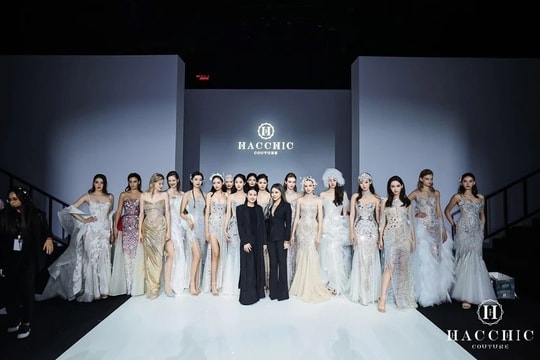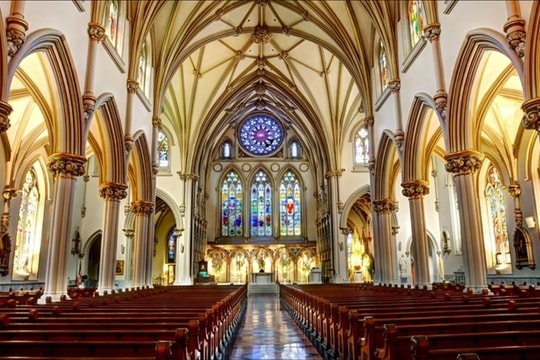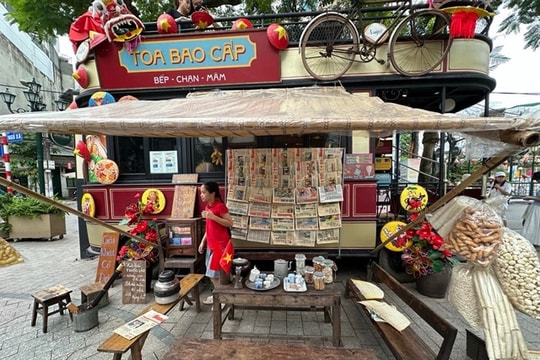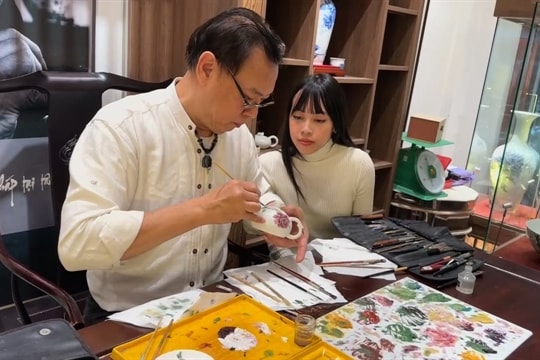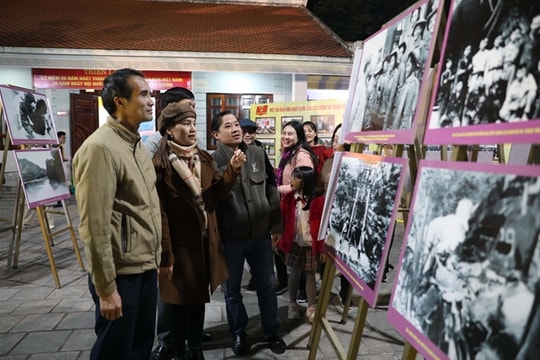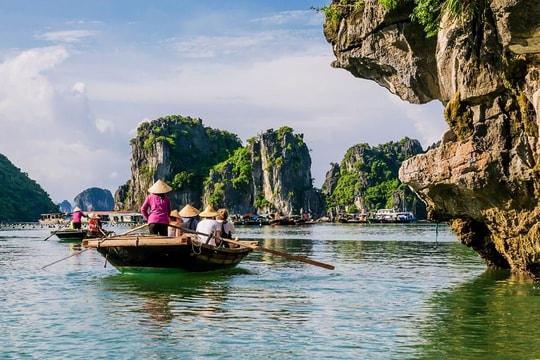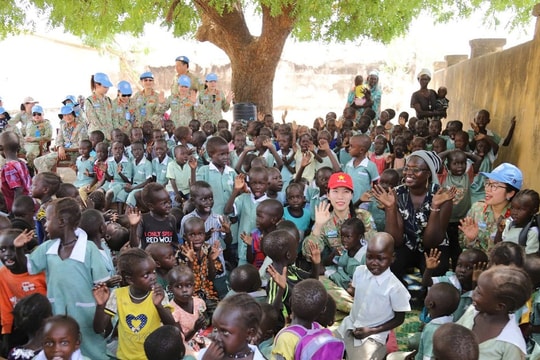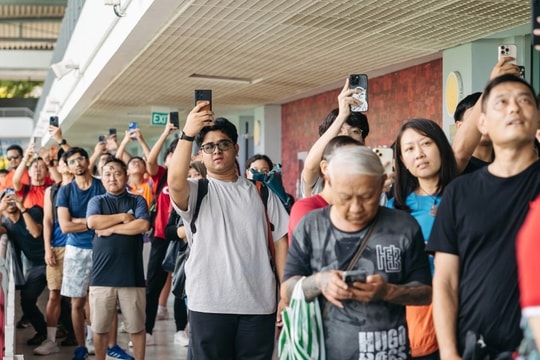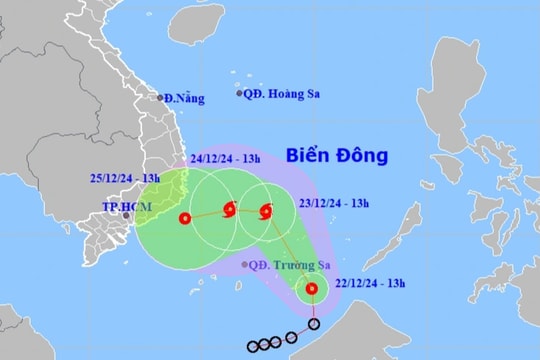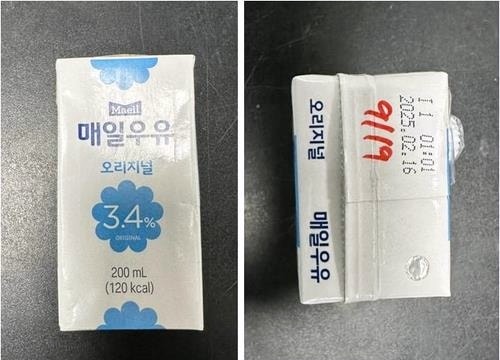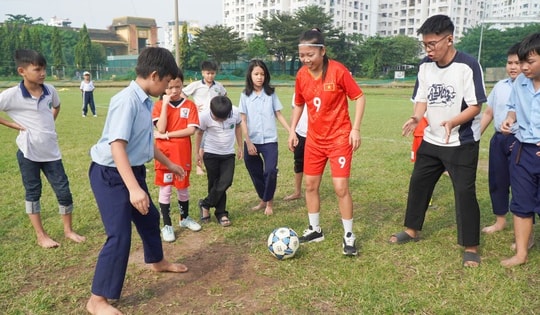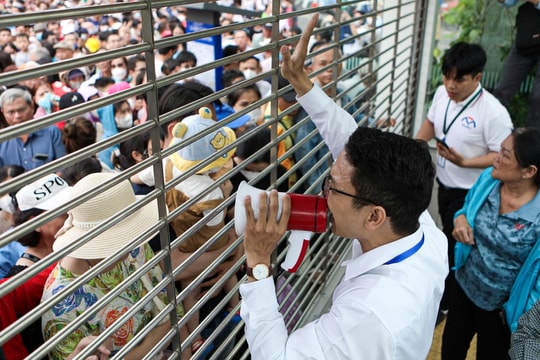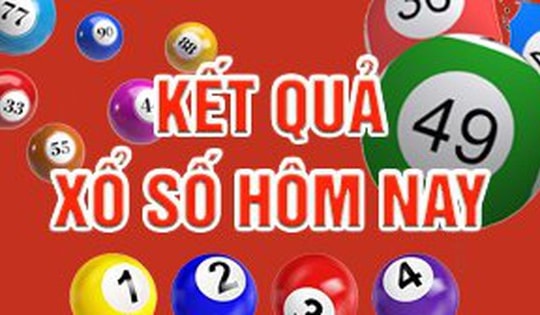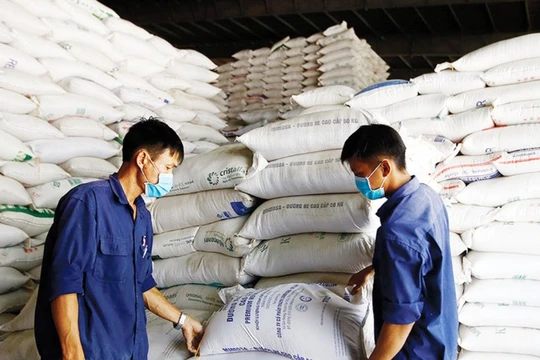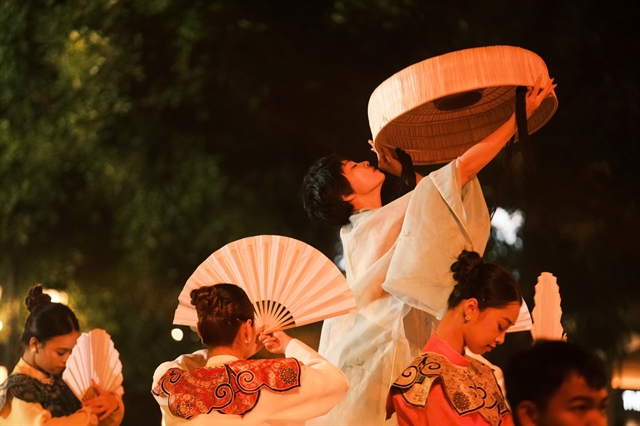 |
| Artists perfomed Giao lộ (Intersection on the opening ceremony of Hanoi Festival of Creative and Design 2024. Photo courtesy of the organisers |
HÀ NỘI — Under the theme 'Creative Intersection', the Hanoi Creative Design Festival 2024 is taking place until November 17, with over 100 activities designed to engage the community and highlight the arts for the public.
The activities set to take place throughout the festival, now in its fourth year, will showcase more than 1,000 creative artworks, with contributions from over 500 designers and experts in creative industries all forming a colourful and dynamic celebration.
Hà Nội’s Creative Design Festival will take place in seven of the capital city's iconic heritage sites, featuring dynamic activities across a wide variety of creative fields, including architecture, design, visual arts, performing arts, film, fashion, music, handicrafts, publishing, advertising, games and software, and culinary arts.
The main festival venue is located at August Revolution Square, connecting the 'Cultural Heritage' axis of Lý Thái Tổ Street with Lê Thánh Tông Street.
Meanwhile the 'Creative Economy' axis runs along Tràng Tiền Street, featuring prominent architectural landmarks like the Children’s Palace, the National History Museum and the University of Science, as well as cultural spaces such as Hoàn Kiếm Lake and five flower gardens including those at Lý Thái Tổ, Diên Hồng, Cổ Tân, 19/8 and Tao Đàn.
 |
| Visitors explore the interactive art exhibition complex titled Indochina Sense, featuring 22 installation art pieces and light performances at the former University of Hà Nội building complex (now the University of Science). Photo courtesy of the organisers |
On the first day of the festival, creative spaces and exhibitions at the former University of Hà Nội building complex (now the University of Science) attracted a large number of visitors.
Artist Nguyễn Thế Sơn said that the building may look French neoclassical at first glance, but its design features are inspired by traditional Vietnamese art, blending Indochine aesthetics with European cultural and scientific influences.
A highlight of the building complex is the interactive art exhibition titled Indochina Sense featuring 22 installation art pieces and light performances.
The exhibition revives the nostalgic sensations of Indochine art and architecture through diverse artworks that blend sound, imagery and light.
The Hà Nội Children’s Palace also offers a wide range of interactive activities that will draw people of all generations to play, learn and engage with each other.
Families can participate in painting on the pavement or playing in the sand along the pavilion Corridor of Innocence, and take part in activities at the 'Hà Nội Children’s Palace: Nostalgia for the Future,' which includes creative installations, design works, symbolic structures, exhibitions, film screenings and art performances.
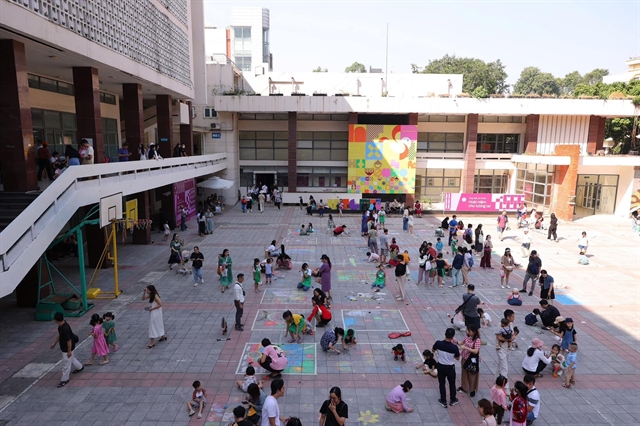 |
| Many families participate in painting on the pavement of Hà Nội Children’s Palace. Photo courtesy of the organisers |
At the Việt Nam National Museum of History, the pavilion titled Rồng Rắn Lên Mây (Dragon Snake) showcases models of the museum made from various materials such as wood, ceramics and porcelain, drawing large crowds.
The Bắc Bộ Phủ building, once the residence of the Governor-General of Northern Việt Nam and later the Northern Administrative Office, holds historical significance as the site of the first revolution in Hà Nội in 1945 and the Liberation of Hà Nội in 1954.
This iconic architectural space has been transformed into a unique creative venue and is open to the public for the first time during the festival.
Over 20 domestic and international workshops and seminars on the creative industries are also taking place, including on such topics as Artificial Intelligence and Architectural Design, Cu Li Never Cries: Thinking of Hà Nội City as a Cinematic Character, Human Memory and Artificial Intelligence: The Role of Technology in Heritage Conservation, Tradition Through the Lens of Contemporary Architecture and Architectural Heritage in a Creative City.
Hà Nội has undertaken many initiatives as a member of the UNESCO Creative Cities Network. After officially joining in 2019, Hà Nội became the first city in Việt Nam to become a member of the UNESCO Creative Cities Network.
The annual festival is jointly organised by the Hà Nội Department of Culture and Sports and Architecture Magazine, under the direction of the Hà Nội People's Committee and the Việt Nam Association of Architects.
Bùi Thị Thanh Hương, Deputy Editor-in-Chief of Architecture Magazine, said that in addition to evoking familiar heritage for the people of Hà Nội, this year's festival aims to awaken the community's creative spirit.
The festival also seeks to foster a sense of collaboration within the community, attracting not only creative experts and artists but also individuals and organisations from diverse fields and industries.
Visitors can find more information about the festival on its website, lehoithietkesangtao.vn, and its Facebook page, https://www.facebook.com/lehoithietkesangtaohn/. — VNS



